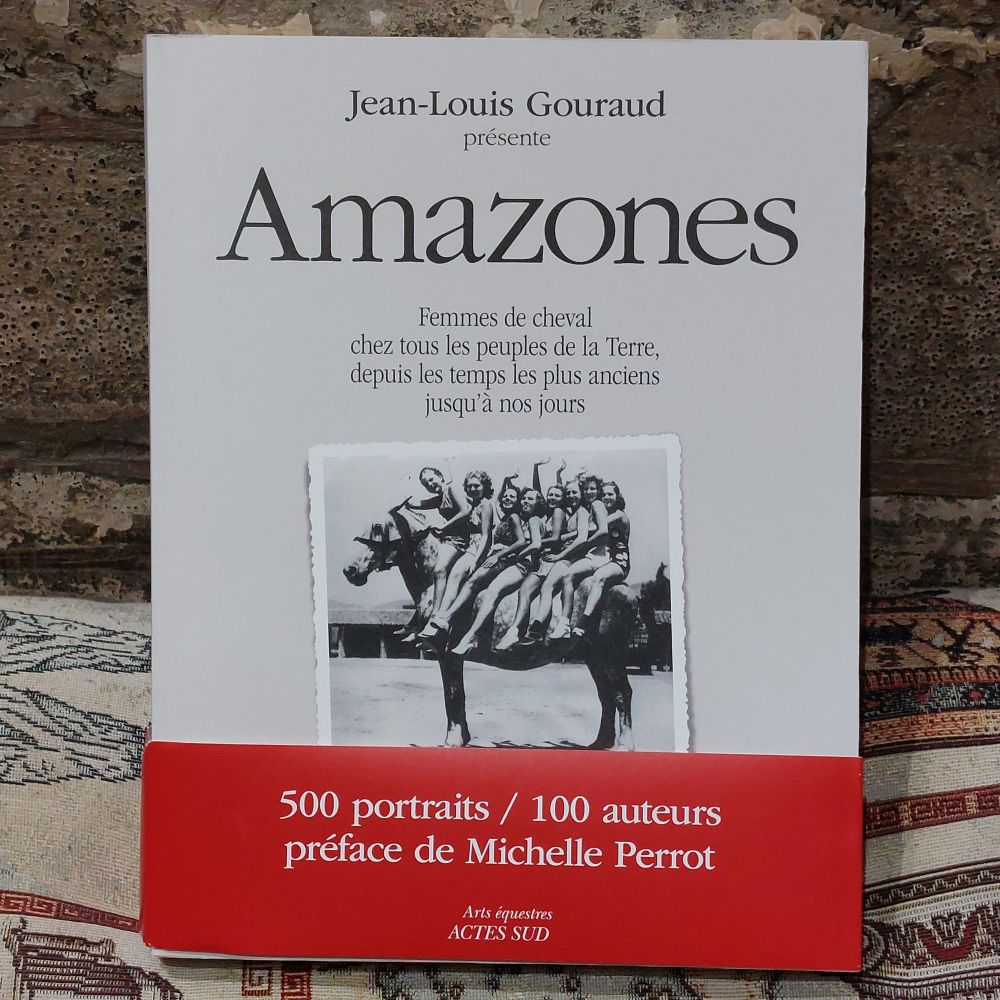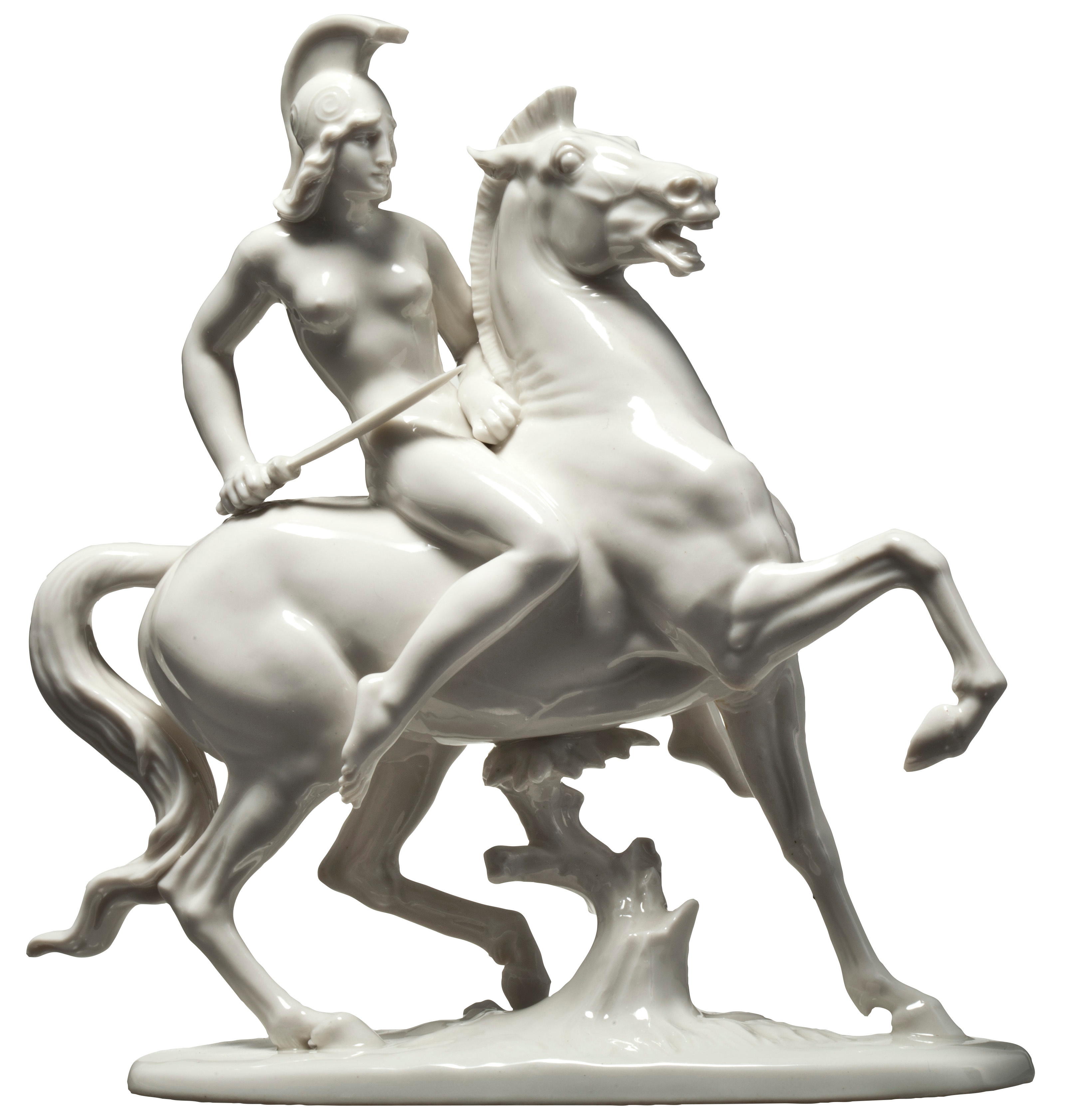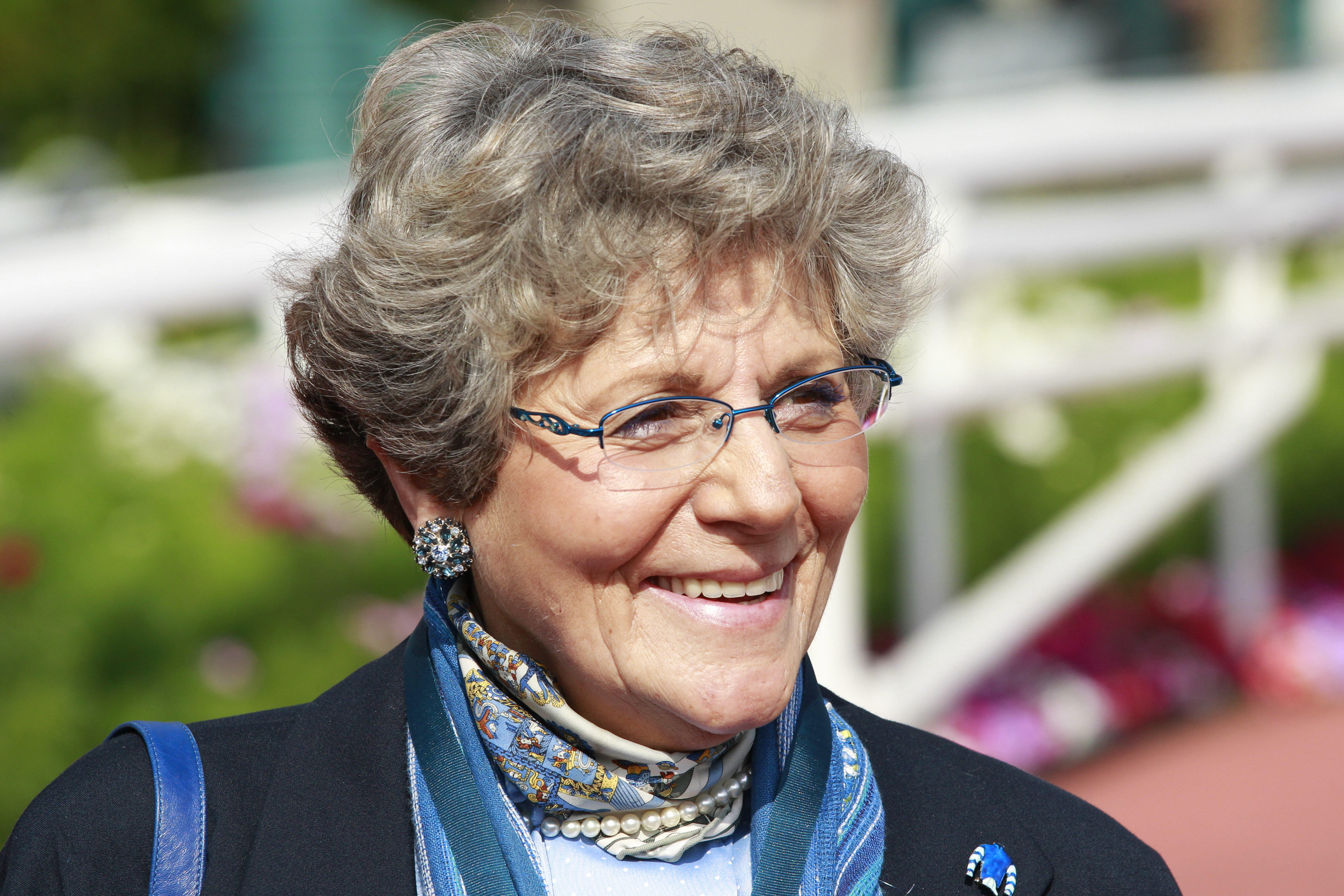
9 minute read
Women and horses
Adrien Cugnasse did not hesitate to accept when he was asked by Jean-Louis Gouraud to contribute to Amazones, a reference book listing 500 of the world’s greatest horse women
AMAZONES is the first encyclopedia detailing the achievements of women in the horse world. The book features work by over 100 French writers, who joined forces to publish this book on horse women from all countries, all periods of history and all disciplines.
French people may not be the biggest readers in the world, they surely have a weird relationship to the object called the “book”, but then again France is probably the only country where a President won’t be blamed for having an affair during his mandate!
In 2006, president Nicolas Sarkozy said it was anachronistic to ask civil servant candidates questions about the “La Princesse de Clèves”, a novel published in 1678.
During the following weeks, if not months, the Parisian intelligentsia claimed it was shameful to have a President who had such a complete lack of culture. The controversy was on the front page of many national papers and public readings of “La Princesse de Clèves” were organised in front of the Presidential palace.
The ugly truth is that most of the French people never heard of this book before this controversy. Having said that, publishing a horse book is still regarded as a real social and political marker in France where equine activities, like most of the sports, have a limited audience compared to Britain.
Statistics show that three million people in France ride at least once a year, but that does not necessarily mean they consider horse topics “noble enough” to be a proper book subject, and this lack of demand has made equine book projects in French very hard to be financially sustainable.

But, in this desert of equine literature, there a few white knights battling to give the horse a place in the world of books.
The most famous is Jean-Louis Gouraud.
Since the 1970s this now 81-year-old gentleman has written, edited or published more than 100 books about horses. Some of them are mainstream, others less so and I remember quite vividly reading his words about a trip he made to visit the only pony club of North Korea.
Gouraud, never short of ideas, is a man with a strong network, and, luckily, money never seems to be a problem for hm.
He pitched this latest idea for an encyclopedia of women in the horse world and history to Actes Sud, one of the most prestigious French publishing houses, and convinced them it would it a marvellous project, worthy of the bigger picture in order to compensate for a lack of possible profit.
The book is called “Amazones: Femmes de cheval chez tous les peuples de la terre, depuis les temps les plus anciens jusqu’à nos jours.”
In English this means “Amazons, Horse women among all the peoples of the earth, from the most ancient times to the present day”.
The plan was highly ambitious: to make a list of the 500 of the most influential horse women of history, right from Ancient Greece to today, and write a short biography for all of them.

It was an insane quantity of information to collect, but Gouraud’s strategy was simple. He delegated the work and asked dozens of horse journalists, authors, teachers and retired scholars to work on the project.
Nobody was paid, but everybody felt proud to have been part of something important.
I thought this adventure sounded fun and interesting so when Gouraud called me, I immediately agreed to write a couple of biographies on the horse women I consider to be, and have been, exceptional.
He never questioned the list of women I wanted to write about, and it is a purely subjective judgment.
The book is a mix of some of the highest-achieving females of our world alongside a few very obscure artists or researchers about whom you hardly find a trace on the search engines. I suppose it’s part of the charm of the project.
“I have decided to let every author take personal responsibility for their own choice,” says Gouraud. “This book is far from perfect. It is absolutely not an exhaustive list of all the important women in this history of the horse.
“But by its very existence, it is a bold statement of how important females have been in the relationship between equine and human kind. And how important, if not dominant, they will be in the future of this wonderful history.”
Every possible aspect of the horse world is there: lady polo riders from the 60s and female jockeys of our times, writers and breeders of all around the world, goddesses from the Greek mythology and Christian saints, a few sculptors, a couple of editors and a handful of scientists.

The book is 737 pages long and is the size of a dictionary.
When asked what was the starting point of such an adventure, Gouraud explains: “Through my life, I have seen the horse world become more feminine at an absolutely dizzying speed.
“So I tried to understand why and how. A few decades ago, I had already published a few pieces on the subject.
“Since then, this phenomenon has continued to accelerate and it seemed to me that it once again deserved full attention.
“The big change really occurred after the WWII. At the end of the conflict, horses were no longer used in agriculture, transport or even the army. Until then, men reserved the exclusive use of the horse, the latter itself being a representation of economic power, and power in general.
“Then men found other instruments through which to express their virility and their authority – with the advent of planes, cars and machines, women finally had access to this universe.
“This also coincided with the moment when the horse ceased to become an instrument of work, to become nothing more than an element of leisure.
“I told myself that I was going to take an inventory of all the women who, from antiquity to the present day, have practiced or used horses, not only from Western Europe, but all over the world, and especially in all disciplines.
“In my opinion, a painter, who has been inspired by horses all her life, is a horsewoman, just like a woman who is a breeder or an owner.
“This book is therefore not a dictionary of women riders, but an attempt at an inventory, incomplete, of course, of women for whom the horse has occupied a primordial place during their lives.
“And this inventory was only made possible thanks to the fact that I asked for the help of dozens of specialists. The best possible to be honest. I think they have provided a clear vision of women’s influence in every geographical area and historical period of the horse world.”
In this book you will find the “obvious ones”, such as the Amazons or Joan of Arc, but also unknown stories.
Many people will be surprised with the information that is revealed, for instance, Catherine of Russia, known for her diplomatic skill and her authority, was also an expert breeder and even the created of certain breeds of horses.
The angle was as much about including female riders as women who had never ridden a horse.
For instance, Suzy Volterra never rode a horse and yet she was a great owner.
She owned Derby winners in the 50s as well as Topyo, who won the 1967 Prix de l’Arc de Triomphe.
This is a first inventory, it is quite possible that there are some omissions, and in future this number will increase.
Amongst the very famous racing names of the book you can find Rachael Blackmore, Élisabeth Couturié, Hollie Doyle, Élisabeth Fabre, Criquette Head, the Marquesses of Moratalla, Sylvia Wildenstein… and many others.
There is little chance “Amazones” will be translated into English. But it would be such a good challenge if the British horse community would start its own encyclopedia of horse women.
Profile: Corine Barande-Barbe
The French trainer Corine Barande-Barbe established herself in a masculine, almost misogynistic, environment.
“Trainers don’t do the same job as me,” said Barande Barbe, a pioneer who pushed scholars to create the word “entraîneure”.
Decades later, even though female trainers became widely accepted, there were still difficult battles to fight, and Barande-Barbe understood the need a male ally.

She married the astute bloodstock agent Patrick Barbe and initially created a partnership with the young trainer Pascal Bary, the pair enjoying success with the fast Deep Roots.
While her husband explored the Japanese market, and Bary enjoyed a flying start, Barande-Barbe followed her own path, far away from the big guns.
Seven-figure priced yearlings never reach her stable, but she done the best with what she has. All trainers look out for that genetic surprise and in 1994 that miracle happened.
A local farmer sent her a “Cinderella”, a filly who became named Carling after a coal mine in France. She was a proper working-class thoroughbred.
And then, as from time to time in this sport, the impossible happened – Carling won the Prix de Diane (G1). That year’s Classic champagne had something of a subversive flavour.
Two decades later another rag to riches story emerged in Barande-Barbe’s yard: the fabulous runner Cirrus Des Aigles.
By the little-known sire Even Top and out of a slow dam by Septieme Ciel, Cirrus Des Aigles won over €7.3 million in prize-money and 22 races from 67 starts.
Barande-Barbe lived with the late Alain Lequeux, a gentleman rider for whom life was not only on the track. On occasions, through Deauville’s August season, he could be spotted riding first lot in a tuxedo having spent the whole night and early morning at the casino.
Today, nobody wears a tuxedo at the casino, and the jockeys are factory workers with millions in their bank account.










